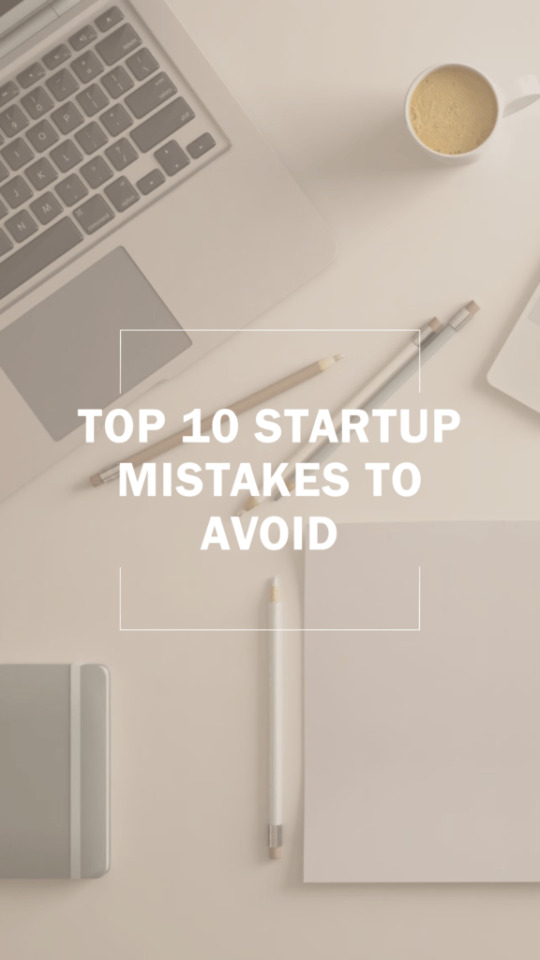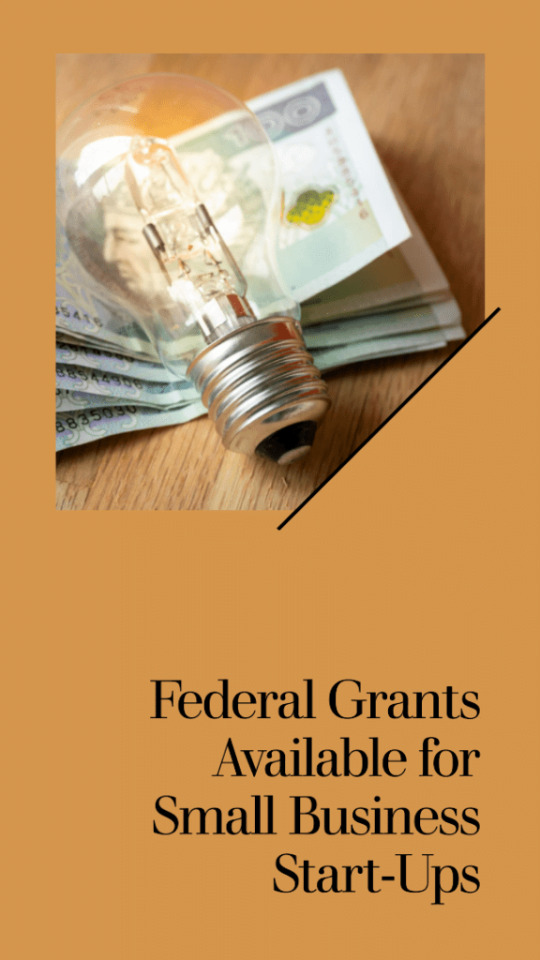#Revenue Model
Explore tagged Tumblr posts
Text
REVENUE MODEL FOR SOCIAL AND NON-SOCIAL ENTERPRISE

The Connection of the Topic to Us Young Entrepreneurs
Highlights the importance of understanding revenue models for ensuring the financial viability of a business.
Teaches us to explore innovative and adaptable strategies for generating income, which is crucial for startups in dynamic markets.
Encourages us to analyze and combine different revenue models to diversify income streams and mitigate risks.
Inspires us to develop business plans that align with sustainable operational goals and long-term growth.
Provides insights into how creative approaches, like the “One for One” model, can enhance customer loyalty and differentiate our offerings.
The Connection of This Topic to Our Product
Revenue models guide how we can monetize BioFilter effectively while ensuring affordability for our target audience.
Subscription services, for instance, could be utilized by offering maintenance kits or replacement filter packs on a regular basis.
A freemium model might involve providing basic BioFilter setups with optional premium add-ons, such as enhanced biological pebbles.
Direct sales at aquarium shops or partnerships with pet stores could serve as primary revenue channels.
Understanding revenue models allows us to adapt pricing and sales strategies based on market trends and customer needs, ensuring sustainable growth for BioFilter.
My Reflection/Insight from the Topic
This webinar emphasized that a clear and innovative revenue model is vital for a startup’s success, especially when introducing a unique product like BioFilter.
I realized that revenue models are not just about earning money but also about creating value and trust for customers while maintaining operational sustainability.
The discussion sparked ideas about exploring multiple income streams to ensure resilience against market fluctuations.
It reinforced the importance of staying customer-focused while crafting revenue strategies that align with our mission of offering eco-friendly and efficient aquarium solutions.
Overall, the topic encouraged me to think creatively and strategically about how we can make BioFilter a profitable and impactful product in the market.
#technopreneurship#webinar#zoom#revenue model#bio clear solutions#aquariums#enthusisasts#WeAreOneCamaman-an#Pinikitan Warriors#TPG
0 notes
Text

AgriTECH: A Comprehensive Revenue Model (NON-SOCIAL ENTERPRISE)
AgriTECH is a robust platform designed to revolutionize the agricultural industry. To ensure its sustainability and growth, we've implemented a diverse revenue model that leverages multiple income streams. Let's delve into the key components of this model:
1.) On-Social Direct Sales
Social Commerce Integration: Seamlessly integrate AgriTECH with social media platforms like Facebook, Instagram, and TikTok, enabling vendors to showcase products and process sales directly.
Shoppable Posts: Host shoppable content on AgriTECH's official social media pages.
Live Selling Events: Facilitate live-streaming sales events where vendors connect directly with consumers.
Social Group Buying: Encourage group purchases and bulk orders through social platforms.
2.) Subscription Plans
Vendor Subscriptions: Offer tiered subscription plans with varying features and benefits.
Consumer Subscriptions: Provide premium memberships with exclusive perks and privileges.
Marketplace Subscriptions: Allow third-party sellers to list products on the AgriTECH marketplace.
3.) Freemium Model
Consumer Freemium: Offer a free version of the app with limited functionalities, encouraging users to upgrade to premium features.
Vendor Freemium: Provide free listings for vendors with limited visibility and features, upgradable to premium plans.
Pay-As-You-Go: Allow users to pay for specific features without committing to a subscription.
4.) Advertising Revenue
In-App Advertising: Showcase banner and pop-up ads from vendors and third-party brands.
Sponsored Listings: Allow vendors to pay to feature their products in search results.
Social Media Advertising: Utilize AgriTECH's social media platforms for branded content and promotions.
Video Ads and Tutorials: Create and monetize video content featuring vendors, farming practices, and product promotions.
Hyper-Local Ads: Target ads based on user location to showcase nearby vendors and regional products.
5.) Affiliate Marketing
Vendor Referral Program: Reward users and existing vendors for referring new vendors to the platform.
User Referral Program: Incentivize users to refer friends to the app.
Third-Party Affiliate Sales: Partner with agricultural suppliers, eco-friendly brands, and local businesses to sell their products through the AgriTECH platform.
Influencer Partnerships: Collaborate with influencers in the agricultural and sustainability niche to promote AgriTECH and its products.
0 notes
Photo

This post introduces a new and interesting monetisation model the author calls Frugly.
(via Frugly vs. Freemium)
0 notes
Text
"Oh so they're capitalists now" motherfucker it's all capitalism. Youtube having 50 ads a video with an in-video sponsor read that takes a quarter of the video is capitalism. Be real
#you're not a dirty capitalist because you have to live under capitalism#you're not a dirty capitalist for trying to get sustrainabke revenue for your independent company#until there's fucking screen limits and bans on password sharing it's not a malicious move to make their own service#they aren't deleting everything. they're still gonna give access to first episodes of new shit#it's the dropout model#i get that it's a big change and i agree that the issues for international viewers will have to be dealt with because that's a PROBLEM#the issue isn't them moving to this model over youtube#there will be new shows#shit will develope#watcher#watcher entertainment
66 notes
·
View notes
Text
honestly when I turn 18 I’m probably gonna disappear for seven years, come back with a million dollars on my parents doorstep, dump it, disappear again and work in the trades until my hands wear out, buy a condo in the city, and never use this brilliant mind ever again
#the plan#I need to fucking lock in now but I mean that’s the dream… just being financially secure enough to do whatever the fuck I want#While also paying back my dues#I’m gonna have to work really hard to get that normal life#By God’s will I’m gonna get it#anyways step one: publish app with admob so I can. Get paid#Honestly rn all I can do is get multiple revenue streams#Make simple ml model that can detect rhythm and pitch and complicate it over time (long term project)#Post about said projects on medium (idk how many reads I need to get cashflow)#Probably a few other ways I can hustle… I have two months so realistically to get it fast job is the best but no scalability#so alternately. What do we need to do.#.og
6 notes
·
View notes
Note
How do you think RC makes money despite all these diamond rushes? They have increased the frequency of dr also does it not cause them loss?
Hello anon, I thought a bit about this and have arrived at my own conclusion regarding the same. Now this is what I personally inferred so I advise you to take it with a grain of salt.
The revenue generation model of newspapers and magazines is the closest to these free apps for gaming or otherwise.
Newspapers usually cost a few cents, which is minimal considering the amount of money that goes into production which also includes the salaries of the employees. Even if the newspaper has a million subscribers, their total added expenditure is nowhere close to the production investment.
So one might think how are these publication houses making profits? It is simple, their subscribers are not only their customers but their products. Allow me to elaborate, advertising agencies agree to put their advertisements in newspapers and magazines based on their reach which means their total number of subscribers. The publication houses charge generous amounts for these advertisements and that becomes their primary source of revenue.
I believe this is RC's revenue model too. They make money primarily through paid advertisements on their app. The readers who spend money on in-app purchases are very less so that amount is not exactly contributing significantly to RC's revenue.
Diamond rush events contrary to popular opinion are actually profitable for RC. Why? Readers are very likely to read, replay and re-read books during diamond rush events, hence this is the time when there is the most traffic on their app, which works as a perfect incentive for potential advertisers.
It is highly unlikely that a corporation would take a decision that harms them economically, if Diamond rush events were actually causing them losses they wouldn't have increased their frequency.
Based on their financial documents that are public, they seem to be making minimal profits, but I can assure you that they are making enough to stay afloat. If they were to actually capitalise on the ad revenue model to its fullest potential like most western apps do, they might even be able to increase their profits while simultaneously keeping diamond rush events for non-paying users.
Apologies for the lengthy answer, but I hope this helped!
10 notes
·
View notes
Text

Achille Fossiez Revenu
6 notes
·
View notes
Text
working on my resume like wow i cannot believe i was let go!!! i am an asset!!!
#i made a machine learning model. like i came up with the idea and wrote 100% of the code and it earned the company millions of dollars#ONE ad campaign (i know don't @ me i'm a traitor) using my model brought in literally half a mil in additional revenue#like y'all!!! my salary and benefits are way less than this#i think they're gonna regret annihilating the data science team#ppl think we work too slow because they don't get how programming works but we add a lot of value#whatever!!! their loss 💅#m.txt
6 notes
·
View notes
Text
How to Turn Your Online Business Dreams into Reality


Introduction: The Digital Frontier of Entrepreneurship Selecting a Niche and Business Model: The Foundation of Success Building Your Online Platform and Brand: Your Digital Headquarters Creating High-Demand Products and Services: Delivering Value to Your Audience Implementing Effective Marketing Strategies: Attracting Targeted Traffic Diversifying Revenue Streams for Maximum Profits: Building Financial Stability Optimizing for Maximum Profitability Long-Term: Building a Sustainable Business Conclusion: Turning Dreams into Reality True successful story
Introduction: The Digital Frontier of Entrepreneurship
In today's digital age, the rise of the internet and technology has revolutionized the way we do business. It has opened a world of opportunities for entrepreneurs to start and run their own businesses online. Online businesses offer flexibility, scalability, and the potential for global reach. This comprehensive guide will provide you with a step-by-step framework for building a profitable online business from the ground up. Whether you want to start a side business or build a full-time online empire, follow this ultimate guide to turn your idea into a thriving, sustainable online business. With focus, grit, and commitment to continuous improvement, you can build the profitable online business of your dreams.
Selecting a Niche and Business Model: The Foundation of Success
The foundation of every successful online business is choosing a profitable, in-demand niche and a business model tailored to your goals. Select a niche you're passionate about; this will make creating content a breeze. Conduct thorough keyword research to assess search volume and demand. Join relevant online communities to connect with your audience and understand their needs. Evaluate direct competitors in the niche and aim for less saturated niches or unique angles. Consider affiliate marketing potential, as some niches offer higher commissions. Assess opportunities to create multiple products and monetize in diverse ways. Examples of popular online business niches include health, fitness, personal finance, pet care, tech, travel, content marketing, home design, spirituality, language learning, and more. Choose a business model that complements your niche and provides multiple income stream opportunities. Many successful online businesses incorporate 3-4 monetization models. Some of the best online business models to consider include: 1. Blogging: Make money with display ads, affiliates, and branded products. 2. Online Courses: Sell your knowledge and expertise as courses. 3. Dropshipping: Curate and sell products without inventory. 4. Affiliate Marketing: Earn commissions promoting other companies' products. 5. Information Products: Sell online books, templates, checklists, and more. 6. Virtual Services: Provide consulting, freelancing, coaching, or other services. 7. Subscription Membership Site: Offer exclusive content or tools for a monthly fee. 8. E-commerce Store: Sell physical products, merchandising, and more. Your choice should complement your niche and offer multiple income streams. Many successful online businesses incorporate 3-4 monetization models.
Building Your Online Platform and Brand: Your Digital Headquarters
Your website or blog will serve as the headquarters for your online business. Invest time upfront in creating an optimized, professional-looking platform. Purchase a domain name that matches your brand, ideally a .com if available. Select reliable web hosting with optimal speed and uptime. Install WordPress or ecommerce platforms like Shopify or WooCommerce. Design an on-brand, mobile-responsive theme that conveys your style. Include essential pages like Home, About, Contact, Services, Blog, and Shop. Set up email marketing and analytics to capture leads and track traffic data. Create visually branded assets such as logos, color palettes, fonts, and graphics. Ensure a cohesive user experience across all touchpoints. If you lack web development skills, consider hiring a freelance designer to bring your vision to life. Continually optimize your website for higher traffic, leads, and sales over time. This includes technical enhancements, user experience improvements, and page speed optimizations.
Creating High-Demand Products and Services: Delivering Value to Your Audience
The key to running a profitable online business is consistently creating products and services that deliver extreme value to your audience. Popular digital products you can create include online courses, eBooks, guides, checklists, software, premium memberships, virtual events, video tutorials, templates, and more. When brainstorming products, look for opportunities to simplify lives, save time, educate, entertain, or improve outcomes for your target customers. Leverage your expertise and tap into the skills of others to create premium offerings. High-value services like consulting, freelancing, coaching, and more can also be extremely lucrative. Promote your services through your website and social platforms. Structure your offerings to passively earn income over time, such as online courses that continually generate sales vs. 1-on-1 services that require ongoing effort. Deliver an excellent user experience across your products and relentlessly optimize based on feedback to foster raving fans who refer others.

Implementing Effective Marketing Strategies: Attracting Targeted Traffic
Once your online platform and offerings are ready, it's time to start attracting targeted traffic using proven marketing tactics. A diverse marketing mix is key. Some of the top strategies include: 1. Content Marketing: Create engaging blog posts, videos, and visual content. 2. SEO: Optimize your website for search engines through on-page optimization and link-building. 3. PPC Ads: Utilize platforms like Google, Facebook, Instagram, and YouTube for pay-per-click advertising. 4. Email Marketing: Build your email list with lead magnets, newsletters, and automation. 5. Social Media Marketing: Employ organic and paid tactics to engage your audience. 6. Affiliate Marketing: Recruit others to promote your products and earn commissions. 7. Influencer Partnerships: Collaborate with relevant influencers in your niche. 8. Live Events: Host local meetups or virtual events to connect with your audience. 9. Podcast Guest Appearances: Grow your authority and reach new audiences. 10. Retargeting Ads: Remarket to previous site visitors across the web. Start by focusing on 1-3 core channels, then expand your efforts over time. Pay-per-click and social ads can help quickly scale an audience, while SEO and content creation tend to be most cost-effective in the long-term. Leverage tools like Google Analytics, Facebook Business Suite, and landing page builders to optimize results across all campaigns. Don't hesitate to enlist help from digital marketing agencies and specialists.
Diversifying Revenue Streams for Maximum Profits: Building Financial Stability
Generating multiple streams of revenue is key for building a highly profitable online business. Diversification reduces risk and provides stability as each income channel goes through ups and downs. Here are some of the most lucrative online business revenue models: 1. Product/Service Sales: Your core monetization stream. Ensure competitive yet profitable pricing. 2. Advertising: Display ads, sponsorships, native advertising, etc. Set up Google Ad Manager. 3. Affiliate Marketing: Promote other company's products for commissions. Join affiliate networks. 4. Memberships/Subscriptions: Offer exclusive benefits, content, or tools for a monthly fee. 5. Events: Sell tickets for online or in-person events and training programs. 6. Dropshipping: Curate and sell products without holding inventory. 7. Physical Merchandise: Sell branded products with print-on-demand services. 8. Consulting/Freelancing: Sell your skills and expertise through 1-on-1 services. 9. Tip Jars/Donations: Allow fans to tip or donate to show support. Aim to generate income from both active efforts like service packages and passive streams like online courses that earn as you sleep. Automate processes wherever possible to scale income without increasing workload proportionally. Reinvest profits back into growing your business and diversifying income channels to create an unstoppable snowball effect over time.



Optimizing for Maximum Profitability Long-Term: Building a Sustainable Business
Launching a profitable online business is an important first step. However, creating systems and processes that enable high profitability long-term is vital for sustaining growth. Here are some best practices for optimizing operations and profitability: - Obsessively track KPIs and metrics for all marketing channels and funnels. Analyze data to optimize underperforming areas. - Create excellent customer support systems. Provide prompt, personalized support to increase satisfaction and referrals. - Automate repetitive tasks wherever possible with tools like Zapier. Automate lead collection, customer onboarding, analytics, inventory management, etc. - Systematize your product creation process to quickly test and validate new product ideas, then scale those that resonate. - Document your systems and processes so future hires can replicate them. This includes SOPs for customer service, product fulfillment, etc. - Build a skilled team over time by hiring virtual assistants, freelancers, agencies, and eventually full-time employees. Focus on higher-level strategy. - Maintain work-life balance as a long-term entrepreneur. Make time for adequate rest, leisure, and self-care to avoid burnout. By staying agile, embracing innovation, and relentlessly providing value to your audience, you can build an online business that delivers meaningful income for decades to come.



Conclusion: Turning Dreams into Reality
Starting and running a profitable online business takes consistent effort and persistence. However, by zeroing in on a niche, selecting the right model, crafting high-value offerings, implementing diverse marketing strategies, diversifying your revenue streams, and optimizing for maximum efficiency, you can build an online business that provides freedom and fulfillment for years to come. Remember to stay obsessively focused on understanding and serving your target audience. Combine your passion with grit, resilience, and creativity. With the right mindset and business foundations in place, you have immense potential to build a thriving online business that stands out and makes a lasting impact. The time to stop dreaming and start taking action is now. Follow this comprehensive guide to turn your online business idea into reality, step-by-step. You can build an online empire that allows you to live life on your terms. The possibilities are truly endless if you commit to continuous learning and improvement. Let this guide spark the fire within and set you on the path to online business success. Start pursuing your online entrepreneur dream today.


True successful story
To illustrate the principles and strategies discussed in this comprehensive guide, let's delve into the inspiring true story of Pat Flynn and his online business, Smart Passive Income. Smart Passive Income - About Pat Flynn Background: Pat Flynn was once an aspiring architect who unexpectedly found himself laid off during the economic downturn in 2008. Faced with uncertainty, he turned to the online world to seek alternative income sources. His journey began with a blog, which he aptly named Smart Passive Income (SPI). Selecting a Niche and Business Model: Pat recognized that there was a significant demand for information about creating online businesses and generating passive income. He was passionate about sharing his experiences, both successes and failures, and helping others navigate the world of online entrepreneurship. Pat's chosen niche was personal finance, but his business model extended beyond blogging. Building Your Online Platform and Brand: Pat invested in creating a professional-looking platform for SPI. He purchased a domain name, set up reliable web hosting, and designed an appealing website. His commitment to providing value was evident through the content he produced on his blog, podcast, and YouTube channel. His brand, Smart Passive Income, became synonymous with transparency, authenticity, and actionable advice. Creating High-Demand Products and Services: One of Pat's significant successes came from his creation of online courses and informational products. He developed courses on topics like email marketing, affiliate marketing, and podcasting, leveraging his expertise and audience trust. These products delivered immense value to his audience and contributed significantly to his income. Implementing Effective Marketing Strategies: Pat's marketing strategy was built on content marketing, podcasting, and email marketing. He consistently produced high-quality blog posts and podcasts, which not only attracted a dedicated audience but also positioned him as an industry expert. His email list grew as he offered valuable lead magnets and nurtured his subscribers. Diversifying Revenue Streams for Maximum Profits: Pat's income streams diversified over time. In addition to course sales, he earned from affiliate marketing, book sales, and speaking engagements. He also ventured into software development, creating tools like the Smart Podcast Player. This diversification provided stability and mitigated risk. Optimizing for Maximum Profitability Long-Term: Pat was relentless in optimizing his operations. He regularly analyzed data and user feedback to improve his products and content. His team expanded as the business grew, allowing him to focus on strategic decision-making. Pat prioritized work-life balance, emphasizing family and well-being. Conclusion: Pat Flynn's journey from unexpected job loss to the creation of a successful online business, Smart Passive Income, serves as an inspiring real-life example of the principles discussed in this guide. His dedication to providing value, commitment to continuous improvement, and willingness to diversify income streams are key takeaways for anyone aspiring to build a thriving online business. Pat's story reminds us that with the right mindset and a clear vision, online entrepreneurship can lead to a fulfilling and prosperous career.


Read the full article
#business-model#guide#marketing#niche#online-business#products#profitability#revenue#services#Success
5 notes
·
View notes
Text
ELON MUSK PUT A LIMIT OF HOW MANY POSTS YOU CAN READ A DAY ON TWITTER????? IS HE FUCKING CRAZY??????
#his solution to ''data scraping'' (whatever that means) is to prevent people from using the platform#how fucking stupid can you possibly be#it would be like if twitch said you could only watch 5 different streams in a day#his entire business model profits off ad revenue how tf does he think he's gonna make money if people have to pay to see posts INCLUDING ad
2 notes
·
View notes
Text

A REVENUE MODEL is a plan that outlines how a company will generate revenue from its products or services and suggested that each start-up should have 3-4 revenue model to survive. It defines the methods and strategies used to earn income and achieve financial sustainability, and divided into social or non-social enterprises.
Social Enterprise is a business model that combines social and environmental impact with financial sustainability. It prioritizes social and environmental goals while generating revenue to support its mission.
Donation-based model: This model relies on voluntary contributions from individuals or organizations to support the social enterprise's activities. It's often used by non-profit organizations and charities.
Grants: Grants are funds provided by government agencies, foundations, or corporations to support specific projects or programs of the social enterprise.
Fee for service - educational workshops: This model involves charging a fee for services provided, such as educational workshops or training programs. The revenue generated is used to fund the social enterprise's operations and social impact initiatives.
Membership subscription: This model involves charging a recurring fee for membership to access exclusive benefits or services offered by the social enterprise.
Social Licensing: This is a process where a company or organization obtains permission from a community to operate within it. It often involves a social impact assessment and community engagement to ensure the project aligns with local needs and values.
A Non-Social enterprise is a traditional business model that primarily focuses on profit maximization. While it may engage in corporate social responsibility initiatives, its core purpose is to generate financial returns for its shareholders. Unlike social enterprises, non-social enterprises prioritize financial performance over social impact.
Direct Sale: This is the most straightforward model where a company sells its products or services directly to consumers. Examples include retail stores, e-commerce websites, and service providers.
Subscription: This model involves charging customers a recurring fee to access a product or service. Examples include streaming services like Netflix, software subscriptions like Microsoft 365, and gym memberships.
Freemium: This model offers a basic version of a product or service for free, while charging for premium features or additional services. Examples include many mobile apps and software tools.
Advertising Revenue: This model generates revenue by displaying ads on a platform or within a product. Examples include websites, mobile apps, and video platforms like YouTube.
Affiliate Marketing: This model involves promoting other companies' products or services and earning a commission on sales generated through referrals. Examples include bloggers, influencers, and online retailers.
0 notes
Text
How Financial Forecasting Helps Stay Ahead|Pragmatic Finance


Want to prepare your business for the future? Financial forecasting is a powerful tool that helps businesses anticipate trends, make informed decisions, and adapt to market changes. In today’s fast-paced and unpredictable economic landscape, staying ahead of shifts is crucial for long-term success. At Pragmatic Finance, we offer expert financial forecasting solutions designed to help businesses navigate uncertainty with confidence. In this guide, we’ll explore the importance of data-driven planning, how forecasting supports strategic growth, and how to build a reliable forecasting strategy for your business.
Why Choose Pragmatic Finance for Financial Forecasting?
With Pragmatic Finance, businesses gain access to advanced forecasting tools and expert guidance to support smarter financial planning. By leveraging historical data and market trends, companies can generate accurate financial predictions that inform better decision-making. Pragmatic Finance offers custom forecasting models tailored to specific business goals, along with strategies to mitigate risk during economic uncertainty. With improved budget planning and access to seasoned industry professionals, businesses can allocate resources effectively, invest confidently, and build a more stable financial future through precise and proactive forecasting.
The Role of Data in Smart Business Decision-Making
Financial forecasting relies on comprehensive data analysis to uncover patterns and predict future financial performance. Key data sources include:
Revenue & Sales Trends – Identify seasonal shifts and long-term growth patterns.
Market Conditions – Assess external influences such as inflation, competition, and industry shifts.
Expense Tracking – Project operational costs to maintain profitability.
Economic Indicators – Monitor interest rates, inflation, and consumer behavior.
By leveraging these insights, businesses can proactively address challenges and seize growth opportunities.
Benefits of Financial Forecasting for Businesses
Financial forecasting offers a range of benefits that help businesses stay ahead in a competitive market:

How to Implement a Strong Forecasting Strategy
Pragmatic Finance recommends the following steps for a successful financial forecasting strategy:
Set Clear Business Goals – Define short-term and long-term financial objectives.
Gather Accurate Data – Use past financial reports and market research for analysis.
Choose the Right Forecasting Model – Select between qualitative and quantitative forecasting.
Monitor & Adjust Projections – Regularly update forecasts based on real-time data.
Use Financial Software – Leverage technology for precise and automated forecasting.
Stay Ahead of Economic Changes with Pragmatic Finance
A strong financial forecasting strategy is key to long-term business success. At Pragmatic Finance, we work with businesses to create data-driven financial plans that help navigate economic changes with confidence. From budgeting support to long-term forecasting, our expert team provides the insights needed for smarter decision-making and sustainable growth. Contact Pragmatic Finance today and start building a financially stable and profitable future for your business.
#Pragmatic Finance#Financial forecasting for businesses#Business growth strategy#Economic trend analysis#Data-driven financial planning#Business cash flow projections#Forecasting market changes#Pragmatic Finance forecasting solutions#Business budgeting strategies#Predictive financial modeling#Risk management for businesses#Long-term financial planning#Financial data analysis#Smart business decision-making#Investment forecasting#Business revenue projections
0 notes
Text
Himachal’s Largest Solar Power Project Announced in Kangra – 200 MW Green Energy Leap
#200 MW solar plant#carbon neutral Himachal#CM Sukhu#CM Sukhu solar project#Dharamshala solar project#geothermal energy India#green energy initiatives#green energy project Himachal#Himachal 200 MW solar#Himachal green energy#Himachal model villages#Himachal Power Corporation#Himachal Pradesh clean energy#Himachal solar power#Himachal solar project#HPPCL solar project#India solar energy 2025#Kangra solar energy#Kangra solar project#Renewable Energy Himachal#solar energy India#solar future Himachal#solar model village#solar plant Kangra#solar power Himachal Pradesh#solar project Kangra#solar revenue Himachal#sustainable energy Himachal
0 notes
Text
Turn clicks into cash 💸 with affiliate marketing. Learn how to earn passive income online—no product needed. #AffiliateMarketing #MakeMoneyOnline #SideHustleTips
#affiliate links income#affiliate marketing income#beginner affiliate marketing#digital revenue stream#earn money online#make money with affiliates#monetize your blog#online business model#passive income ideas#work from home tips
0 notes
Text

💡 Maximize Revenue with the $8/hr FTE Model! Healthcare billing just got smarter. The Full-Time Equivalent (FTE) model is helping providers cut costs, streamline workflows, and boost operational efficiency. At Info Hub, we tailor FTE strategies for scalable success.
#FTE employee in medical billing services#FTE equivalent outsource medical billing services#FTE in medical billing#full time equivalent (FTE) employees for outsource medical billing#Full -Time equivalent (FTE) Model for outsorce medical billing and coding#Full -Time equivalent (FTE) Model For US healthcare practice#Full -Time equivalent (FTE) Model in Healthcare revenue cycle management#Full -Time equivalent (FTE) Model in medical billing services#Full -Time equivalent (FTE) Model to Outsource Medical Billing and Coding#Full-time Equivalents (FTEs) for healthcare providers
0 notes
Text
Top 5 Must-Have Features in Revenue Management Software (RMS) to Maximize Hotel Revenue
Revenue Management Software (RMS) is a game-changer for hotels and businesses aiming to optimize pricing strategies, maximize revenue, and stay competitive in today’s fast-paced market. The right RMS uses AI-driven insights, automation, and real-time data to make informed pricing decisions and boost profitability.
However, not all revenue management systems are created equal. With so many tools available, it’s essential to understand what features truly drive performance. In this blog, we break down the five most critical features of effective RMS that help hotels and businesses unlock their full revenue potential.
1. Dynamic Pricing: The Ultimate Revenue Maximization Tool
Dynamic pricing software is the cornerstone of any modern revenue management system. Unlike static or manual pricing models, AI-powered dynamic pricing adjusts rates based on real-time market data, competitor pricing, customer demand, and inventory availability.
Key Benefits of Dynamic Pricing:
Automated pricing updates without manual input
Real-time responsiveness to market shifts and demand spikes
Increased profitability through intelligent, optimized pricing
This feature is essential for industries like hospitality, travel, retail, and airlines, where pricing decisions must be agile, competitive, and profit-driven.
2. Open Pricing: Maximize Revenue Across Segments & Channels
Open pricing allows you to independently set prices for different room types, customer segments, and distribution channels—unlike traditional BAR (Best Available Rate) models, which apply a single rate across all segments.
Why Open Pricing Matters:
Optimize pricing individually per channel and segment
Avoid revenue loss by never closing inventory
Charge different prices for high-demand segments or packages
Hotels using open pricing strategies can increase conversions across OTAs, direct bookings, corporate clients, and group sales.
3. Real-Time Price Optimization: Stay Ahead of Market Fluctuations
Real-time price optimization helps hotels react instantly to competitor rates, market changes, and booking patterns—unlike traditional RMS tools that run on scheduled updates.
Benefits of Real-Time Optimization:
Immediate response to market demand and competitor changes
Prevent revenue leakage due to slow rate updates
Maintain optimal pricing 24/7
For high-demand seasons or last-minute bookings, real-time RMS capabilities can make or break profitability.
4. Pricing Boundaries: Control Meets Flexibility
While automation is crucial, setting pricing boundaries (minimum and maximum rates) ensures your RMS doesn’t go beyond acceptable limits—protecting brand integrity and profitability.
How Pricing Controls Help:
Prevent erratic price fluctuations
Align pricing with business goals and financial limits
Maintain pricing stability during peak or low-demand periods
Hotels can automate intelligently while keeping a strategic grip on pricing decisions.
5. 24-Month Pricing & Forecasting: Long-Term Revenue Planning
The best RMS tools provide 24-month forecasting—allowing hotels to analyze trends and set future rates proactively instead of reactively.
Why Long-Term Forecasting Is Essential:
Capture early bookings and maximize advance revenue
Plan for seasonality, events, or economic trends
Drive smarter decisions through data-backed foresight
Long-range planning ensures your hotel stays ahead—especially during festivals, holiday seasons, or peak travel periods.
Why Revenue Management Software is Crucial for Hotels
In the hospitality industry, Revenue Management Software (RMS) is not a luxury—it’s a necessity. From room pricing optimization to inventory distribution, RMS helps hotels:
Boost direct bookings and OTA revenue
Optimize inventory allocation to prevent overbooking
Enhance guest personalization with data-driven insights
Reduce manual workload with automated decisions
Stay competitive in a price-sensitive market
Final Thoughts: Choosing the Best Revenue Management System
Selecting the right RMS software is a key investment for any business aiming to grow revenue. Look for a solution that includes:
✅ AI-powered Dynamic Pricing
✅ Open Pricing flexibility
✅ Real-Time Price Optimization
✅ Smart Pricing Boundaries
✅ 24-Month Forecasting tools
ZettaPrice offers all these powerful features, making it one of the most comprehensive revenue management platforms in the market. Whether you're a boutique hotel or a large chain, ZettaPrice empowers you with tools to make smarter pricing decisions, increase efficiency, and drive sustainable profitability.
Supercharge Your Revenue Strategy Today!
Looking to maximize hotel revenue and streamline pricing strategies? Ensure your RMS software includes these must-have features.
👉 Choose ZettaPrice – the intelligent, automated, and adaptive revenue management software built for the future of hospitality.
To know more-https://sciative.com/research-articles/5-must-have-features-in-revenue-management-software
#Revenue Management Software#Hotel Pricing Optimization#Dynamic Pricing Tools#Hospitality Revenue Strategy#RMS Features#Real-Time Price Optimization#Open Pricing Model#Hotel Forecasting Tools#AI for Hotel Pricing#Intelligent Revenue Management#Hotel Revenue Growth#Smart Hotel Technology#Automated Pricing Software#Hotel Industry Trends#Room Rate Optimization#24-Month Pricing Forecast#ZettaPrice RMS#Best RMS for Hotels#Revenue Management in Hospitality#Pricing Automation for Hotels
0 notes